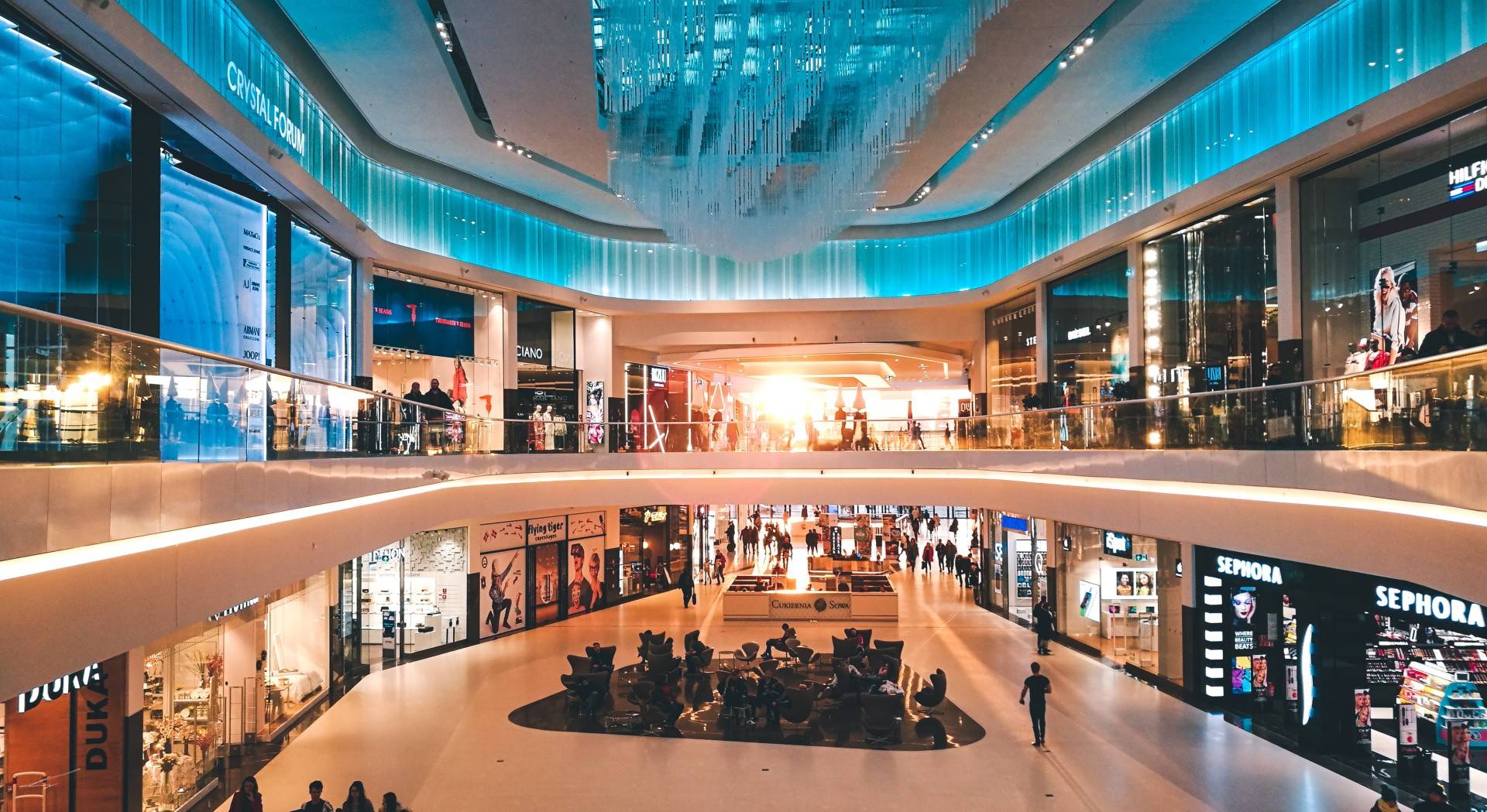

The pandemic and instant shutdown created a commerce environment unlike any that we’ve seen in the modern age. For instance, the U.S. achieved ten years of ecommerce growth in the first three months of the lockdown (16%). On the other hand, brick-and-mortar establishments are still picking up the pieces and their results range from minor disruption to bankruptcy, as they struggle to maintain their previous market share.
Research shows that 75% of global consumers tried different websites, stores or brands during COVID-19 and 60% of them are expecting to integrate these new options in the future. Now more than ever, retail and CPG brands that respond to customer demand with convenience can create lasting opportunity. Now more than ever, retail and CPG brands must deliver beyond convenience--giving consumers new reasons to believe that effectively meet them in the moment and find more meaningful ways to create longer-term value in their lives.

& opportunity

Retail and CPG brands were already competing with white labels, marketplaces and DTC brands, thanks to the success of brands such as StitchFix and Dollar Shave Club. Retailers will no longer have the vast brick-and-mortar footprint they are currently invested in, which means that CPGs can no longer rely on retail to provide access to customers.
CMOs in these verticals can’t chase shareholder value via price wars and bottom-funnel conversion or via cost-cutting and mass-market brand building. They can’t expect that consumers will share their data if they are not being provided some type of value exchange. CMOs have been resistant to get into the dollars and cents of the product transactions for too long.
Past playbooks are not an option to face the future because benchmarks signaling ‘normal’ are no longer valid. Finally, CMOs can’t ignore the generational shift that’s occurring. Currently they are focusing on Millennials when they should be paying attention to Generation Z, who will make up 50% of consumers in three years’ time.
With the proliferation of lockdown measures around the world, consumers suddenly stopped going to physical retail locations to browse products and often only left the house for curbside pick-up orders they placed online. This included audiences who had never used e-commerce before. This paradigm shift accelerated the ongoing global transition into the post-store era.
Brands had to build or reinforce online storefronts to make their inventories accessible at an unprecedented demand, while also wrestling with the logistical impact of the pandemic. This created challenges for brand marketers, for instance affecting their ability to access studios to create new content - educating consumers on safety measures, store accessibility as well as their commitment to their communities.
For CPG brands, all of this meant having to build direct consumer relationships at a time when third-party data is becoming unreliable or unavailable. For retailers, it meant no longer being able to hide behind mediocre digital experiences. Both scrambled at first, but have since quickly seen the power of digital and first-party data to reach consumers on a one-to-one level.
- Amie Dowker, VP of Strategy, 360i
- Jennifer Horner, Associate Director, Retail & Consumer Goods, DEG
- Jon Reily, Chief Strategy Officer, dentsu commerce
- Anne-Marie Schaffer, EVP Growth Officer, Merkle
V – Value your consumers as people, not data.
Understand your consumers as individuals with unmet needs who belong to communities and prioritize what you can do to better earn their attention. Additionally, respect their privacy by owning your own data and adhering to new regulations like GDPR and CCPA. First-party data solutions enable marketers to invest where it matters the most, while also providing more effective and efficient hyper-personalized service and commerce to consumers across every touchpoint or interaction.
A – Assess and reassess your brand purpose and audience.
What do you value as an organization? What are the pursuits that prove this and build your brand’s credibility? Who exactly are you talking to now that the world has re-prioritized itself in a pandemic-era? Consider changed audiences, older audiences, new strategies and new channels to assess exactly which brand message to send and how to get it to your audiences.
L – Look for innovation in unexpected places and take action.
Consumers are searching for the brands that fit their lives in this moment. Once you’ve taken steps to identify your values and how you choose to prove them to consumers, use innovation to test and learn in big ways. Launch minimum viable solutions and products to confirm your strategy and move your business forward.
U - Unleash social commerce.
What does social commerce look like now that it’s not only a playground for the young? What do these changes mean for the authenticity of social commerce? Are you turning it into a vehicle for purchasing as opposed to it being just a vehicle for brand? Take advantage of the social interruption and don’t squander the opportunity to learn.
E – Experience your brand as a consumer, not a shareholder.
CMOs should take their experiences as consumers in this new world and use them to re-think how to meet customers in the moment. What are the weakest links of your omni-channel experience? Are there ways to simplify it? Are you thinking long-term? Know that each option, link or touchpoint adds new complexities to the journey and to your operations. Do you have the support you need to address them?
Ultimately, brands need to move away from thinking of commerce only as the culmination of an interaction with a customer and rather need to constantly find deeper ways to leverage it to create new opportunities for engagement, and long-term customer value. By shifting to a “total commerce” mindset, brands can establish and extend commerce capabilities across touchpoints for competitive advantage.
Creating V.A.L.U.E.

The pandemic and instant shutdown created a commerce environment unlike any that we’ve seen in the modern age. For instance, the U.S. achieved ten years of ecommerce growth in the first three months of the lockdown (16%). On the other hand, brick-and-mortar establishments are still picking up the pieces and their results range from minor disruption to bankruptcy, as they struggle to maintain their previous market share.
Research shows that 75% of global consumers tried different websites, stores or brands during COVID-19 and 60% of them are expecting to integrate these new options in the future. Now more than ever, retail and CPG brands that respond to customer demand with convenience can create lasting opportunity. Now more than ever, retail and CPG brands must deliver beyond convenience--giving consumers new reasons to believe that effectively meet them in the moment and find more meaningful ways to create longer-term value in their lives.

& opportunity

With the proliferation of lockdown measures around the world, consumers suddenly stopped going to physical retail locations to browse products and often only left the house for curbside pick-up orders they placed online. This included audiences who had never used e-commerce before. This paradigm shift accelerated the ongoing global transition into the post-store era.
Brands had to build or reinforce online storefronts to make their inventories accessible at an unprecedented demand, while also wrestling with the logistical impact of the pandemic. This created challenges for brand marketers, for instance affecting their ability to access studios to create new content - educating consumers on safety measures, store accessibility as well as their commitment to their communities.
For CPG brands, all of this meant having to build direct consumer relationships at a time when third-party data is becoming unreliable or unavailable. For retailers, it meant no longer being able to hide behind mediocre digital experiences. Both scrambled at first, but have since quickly seen the power of digital and first-party data to reach consumers on a one-to-one level.

Retail and CPG brands were already competing with white labels, marketplaces and DTC brands, thanks to the success of brands such as StitchFix and Dollar Shave Club. Retailers will no longer have the vast brick-and-mortar footprint they are currently invested in, which means that CPGs can no longer rely on retail to provide access to customers.
CMOs in these verticals can’t chase shareholder value via price wars and bottom-funnel conversion or via cost-cutting and mass-market brand building. They can’t expect that consumers will share their data if they are not being provided some type of value exchange. CMOs have been resistant to get into the dollars and cents of the product transactions for too long.
Past playbooks are not an option to face the future because benchmarks signaling ‘normal’ are no longer valid. Finally, CMOs can’t ignore the generational shift that’s occurring. Currently they are focusing on Millennials when they should be paying attention to Generation Z, who will make up 50% of consumers in three years’ time.
V – Value your consumers as people, not data.
Understand your consumers as individuals with unmet needs who belong to communities and prioritize what you can do to better earn their attention. Additionally, respect their privacy by owning your own data and adhering to new regulations like GDPR and CCPA. First-party data solutions enable marketers to invest where it matters the most, while also providing more effective and efficient hyper-personalized service and commerce to consumers across every touchpoint or interaction.
A – Assess and reassess your brand purpose and audience.
What do you value as an organization? What are the pursuits that prove this and build your brand’s credibility? Who exactly are you talking to now that the world has re-prioritized itself in a pandemic-era? Consider changed audiences, older audiences, new strategies and new channels to assess exactly which brand message to send and how to get it to your audiences.
L – Look for innovation in unexpected places and take action.
Consumers are searching for the brands that fit their lives in this moment. Once you’ve taken steps to identify your values and how you choose to prove them to consumers, use innovation to test and learn in big ways. Launch minimum viable solutions and products to confirm your strategy and move your business forward.
U - Unleash social commerce.
What does social commerce look like now that it’s not only a playground for the young? What do these changes mean for the authenticity of social commerce? Are you turning it into a vehicle for purchasing as opposed to it being just a vehicle for brand? Take advantage of the social interruption and don’t squander the opportunity to learn.
E – Experience your brand as a consumer, not a shareholder.
CMOs should take their experiences as consumers in this new world and use them to re-think how to meet customers in the moment. What are the weakest links of your omni-channel experience? Are there ways to simplify it? Are you thinking long-term? Know that each option, link or touchpoint adds new complexities to the journey and to your operations. Do you have the support you need to address them?
Ultimately, brands need to move away from thinking of commerce only as the culmination of an interaction with a customer and rather need to constantly find deeper ways to leverage it to create new opportunities for engagement, and long-term customer value. By shifting to a “total commerce” mindset, brands can establish and extend commerce capabilities across touchpoints for competitive advantage.
Creating V.A.L.U.E.
- Amie Dowker, VP of Strategy, 360i
- Jennifer Horner, Associate Director, Retail & Consumer Goods, DEG
- Jon Reily, Chief Strategy Officer, dentsu commerce
- Anne-Marie Schaffer, EVP Growth Officer, Merkle